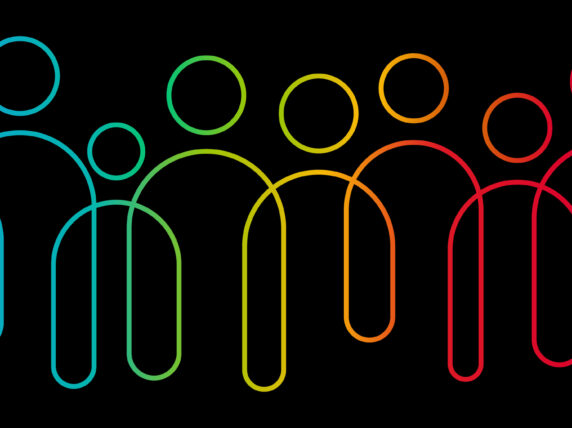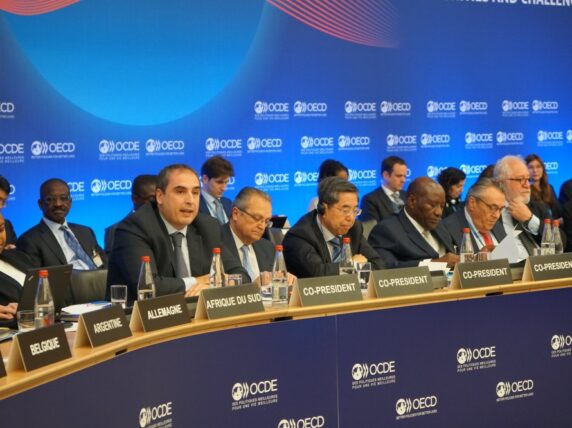Shortfalls in data exclude older people from humanitarian responses
The humanitarian sector has slowly recognised that if it is to support all people in humanitarian crises to enjoy their rights and receive appropriate protection and assistance, it must accommodate their diversity, experiences, values and needs.
As part of this, there have been significant strides in recognising the specific rights and needs of women, children, LGBTQ+ and those with disabilities – all at different stages, all with more to do.
But attempts to meet the different challenges and needs of older people, even though they may be among the most at risk, remain almost negligible. This is despite humanitarian principles and human rights law setting out that everyone has the right to both assistance and protection on an equal basis.
The lack of progress is uncomfortable – morally, ethically and practically. Forecasts that the global population of over-60s will swell to 1.5bn by 2050 add to the urgency. An overhaul is needed if we are to meet the needs of a larger proportion of older people who will inevitably need support in future crises.
There are many reasons for the delay, from resistance to shifting from business-as-usual to ageist policies and ageist views across society. Focussing on gathering more and better data is a practical step towards mainstreaming the inclusion of older people in humanitarian responses, while also challenging wider issues indirectly.
Subscribe to our newsletter
Our weekly email newsletter, Network News, is an indispensable weekly digest of the latest updates on funding, jobs, resources, news and learning opportunities in the international development sector.
Get Network NewsBetter data would provide evidence of need, scale, location, and challenges, while also ensuring that older people’s voices are included in decisions that affect them, making humanitarian interventions fairer and more effective.
In Out of Sight, Out of Mind, HelpAge International research shows that a shortfall in evidence-gathering from the start of humanitarian crises means that older people’s chances of receiving the assistance they need are all but ruled out from the beginning.
The Step By Step Guide, issued each year by the UN Office for the Coordination of Humanitarian Affairs (OCHA), provides direction to agencies on what data should be collected and how it should be analysed and handled to inform their Humanitarian Needs Overviews. These feed into Humanitarian Programme Cycles, outlining objectives and activities for the coming year. This process should also provide a clear blueprint for any data gathering for any humanitarian response.
And yet, it falls short. While older people are more visible than before, with all overviews and most plans (96%) reviewed mentioning older people as a vulnerable group last year, the lack of consistency and analysis, and the frequent absence of age disaggregated data means our understanding of specific needs remains general at best. Too often, there is insufficient detail to shape an informed humanitarian response and support older people’s rights.
As a country where one in four people are over 60, Ukraine is a case in point. Even before February, one in three people affected by the crisis in eastern Ukraine was over 60, making it the ‘oldest’ humanitarian crisis in the world.
Their plight has been highly visible as refugees, displaced people or people remaining at home. However, the lack of specific data on older people including from an intersectional approach, means our understanding of their situation had been frustratingly ‘general’. This was the case until new needs assessments on older people, like those carried out in three areas by HelpAge, were completed.
The Ukraine experience also shows the scale of the task for the sector to truly place older people at the heart of its work. Before February, Ukraine was an example of comparatively successful inclusion of older people in a humanitarian response, with specific needs assessments informing the Humanitarian Needs Overview, and coordination groups and processes in place to monitor and meet their needs.
But the speed and scale of the crisis and the scramble of organisations to the region meant many of these gains were lost. Older people’s needs were not prioritised despite what was already known and what was visible. It was, it would appear, easier to revert to a standard response.
For too long, older people have been overlooked. Instead, we should be ensuring we leave no one behind, recognising the capabilities and contributions of older people to their families and their communities.
All humanitarian actors have a critical role in ensuring that the sector is more inclusive, and we can use the guidance and tools already available to ensure our own activities improve data collection and intersectional analysis and promote inclusion.
Better leadership and accountability from the UN to recognise older people as an at-risk group and stipulate the need to support them alongside other groups is also key. This would filter down so all humanitarian guidelines, including the Step By Step Guide, would recognise older people as a priority group and set out the expectation for all agencies to collect and share relevant disaggregated data.
Donors could also help by, for example, making disaggregated data on older people a requirement for the appeals they support.
Bringing the needs of older people, their challenges and their voices to the heart of our work is vital if we are to remain relevant, accountable and effective now and in the future. Delivering better data is a good start.




